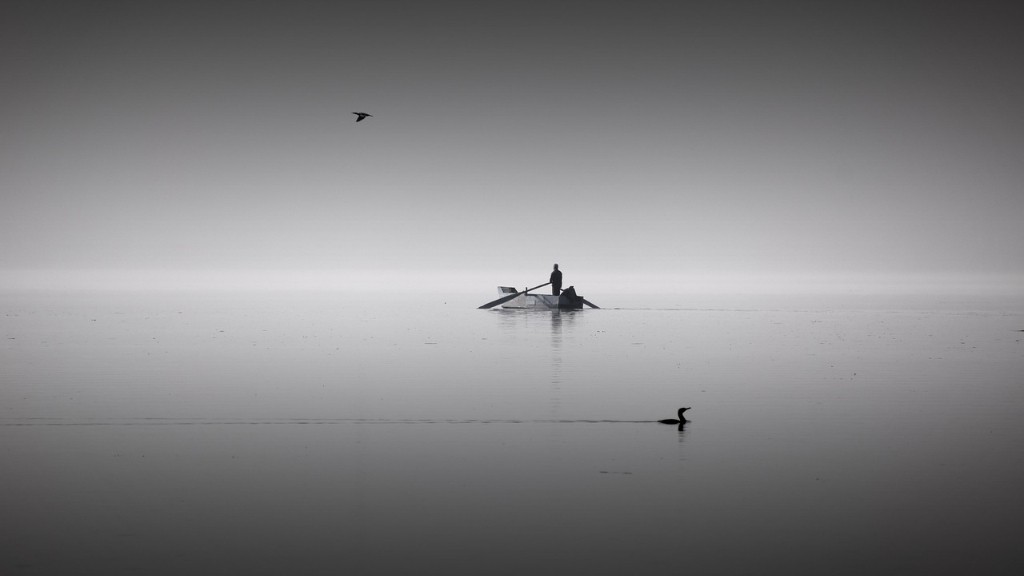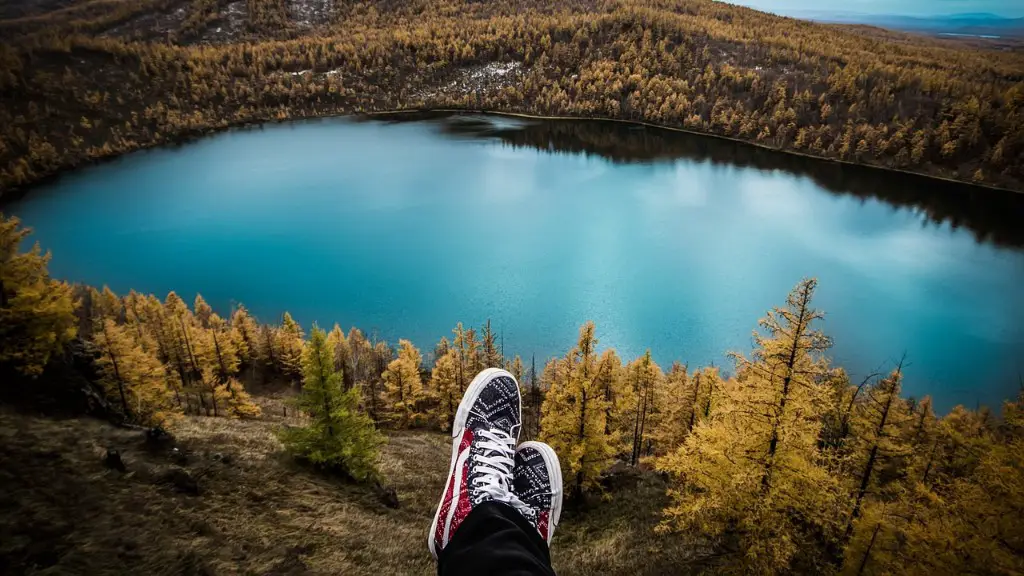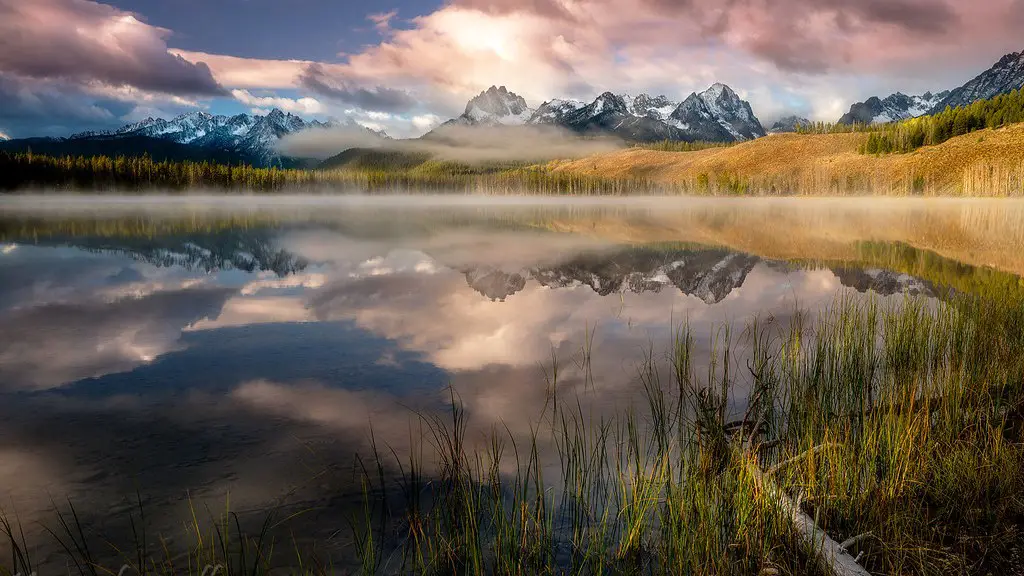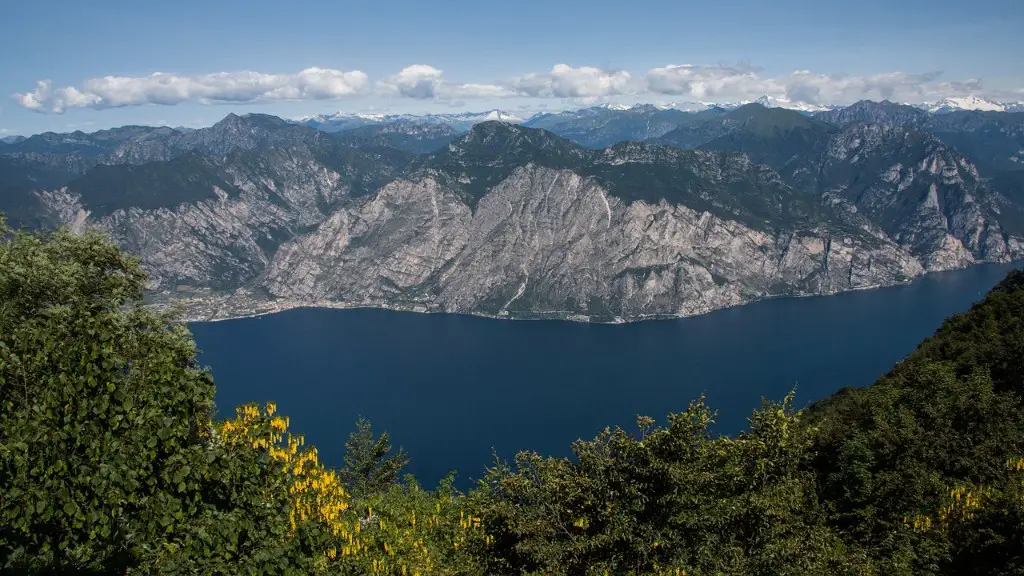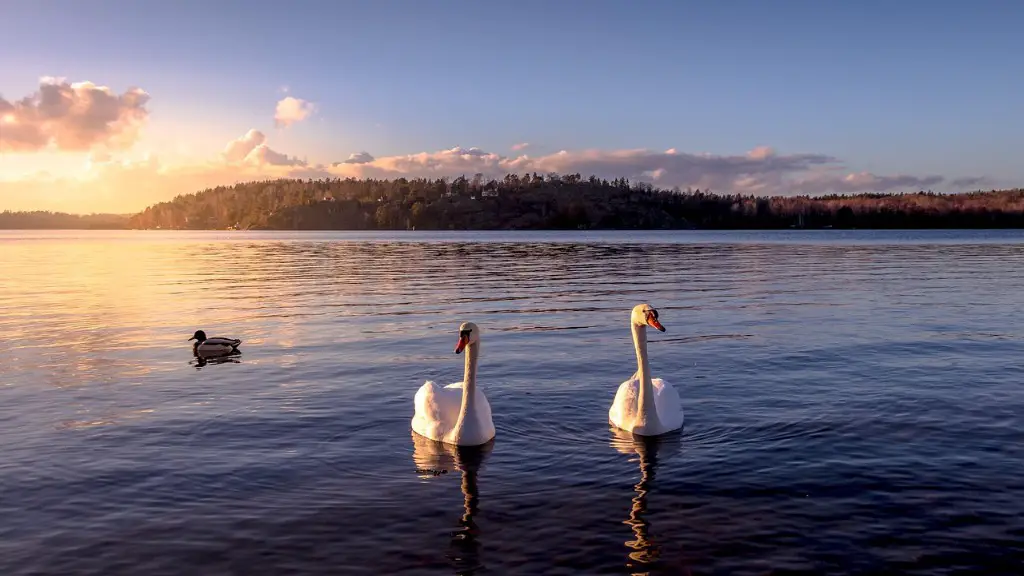Lake Titicaca is the world’s highest navigable lake, located in the Peruvian Andes mountains near the border of Bolivia, at an elevation of 3812 meters. It’s the largest lake in South America and is considered the cradle of Andean civilization, with a rich and diverse history. The lake contains a unique ecosystem, with a wide variety of flora and fauna, including endemic species found nowhere else.
The lake is an elongated shape, roughly running in a north-south direction and measuring 190 km at its longest point, and an average depth of 68 meters. It is connected to the Desaguadero River via the Strait of Tiquina, forming a large, shallow bay. The sandbanks at the western end of the lake host a diverse range of aquatic plants, and the waters also serve as a vital migratory route for birds.
The majority of the area surrounding the lake is composed of altiplano, a rugged terrain characterized by the high plains and deep canyons that form the Andes mountains. There are numerous islands dotting the lake, which are of cultural importance to the region’s inhabitants. The Uros people, related to the pre-Inca Tiwanaku culture, are believed to have been the first inhabitants of the region around Lake Titicaca, and they built their homes on artificial islands constructed from reeds.
Despite its importance to the local culture, Lake Titicaca has been polluted by runoff from humans and livestock, as well as mining and agricultural activities. The lake’s nutrient-rich environment is essential for the survival of its native wildlife, which are in decline due to overfishing and the introduction of invasive species. As a result, conservation efforts have been undertaken to help preserve and restore the lake.
In addition to its cultural significance, Lake Titicaca is also an important economic resource for the region, with a vibrant tourism industry providing jobs and income for local communities. Tourists are drawn to lake for its peaceful atmosphere, centuries-old ruins, and numerous small villages where traditional customs remain intact.
Impact of Climate Change on Lake Titicaca
Climate change is having a severe impact on the ecology of Lake Titicaca. Rising temperatures and intensified rains have reduced the size of the lake in recent decades, and its level is expected to continue to decrease through the 21st century. This could devastate the local fishing industry, as well as the survival of the lake’s unique biodiversity.
The lake’s temperature has risen by an average of 2.8 C since the 1700s, with the greatest increases observed in the past three decades. Analyses have also shown that future climate change is likely to result in the warming and stratification of the lake, resulting in an environment that is increasingly unsuitable for fish and other aquatic species.
The environmental problems caused by climate change could be further exacerbated by rising populations in the region, which put additional strain on resources and create additional pollution.
Climate models indicate that the effects of climate change in the region are likely to be felt for decades to come, with the sacred Lake Titicaca being one of the most vulnerable areas. Conservation efforts and land stewardship initiatives are needed to ensure the lake’s natural and human heritage is preserved in the face of increasing environmental pressure, and that it can continue to provide vital resources for the local populations for many generations.
Dams and Desilting Projects
Several large dams have been built on the lake over the years, with the most recent being the Acarí Dam, which was completed in 2020. The dams are expected to reduce flooding on the lake and improve water distribution to local communities, while also preventing saltwater intrusion.
Desilting projects are also being undertaken to restore the lake’s natural balance and reduce nutrient and sediment runoff. The desilting aims to restore the lake’s aquatic ecosystem, improve water flow, and encourage plant growth in the shallows.
The projects are supported by the government, who have provided financial backing for research and implementation of the desilting and associated conservation plans.
The desilting is seen as an important step towards restoring the lake’s ecology, and local organizations are actively involved in the projects in order to ensure they are both ecologically and ethically sound.
Economic and Social Potential of Lake Titicaca
Lake Titicaca has great potential as an economic and social asset for the region. The lake is a magnet for tourists, and there are increasing numbers of visitors to the islands and villages surrounding it. Local communities benefit from their involvement in tourism initiatives, which provide valuable employment opportunities and much-needed economic growth.
The lake is also a vital source of water for irrigation and other agricultural needs. Irrigation systems connected to Lake Titicaca help to support farmers who rely on the lake for income and food production.
Lake Titicaca is also an important source of energy, as the lake contains high levels of geothermal energy, a renewable resource that could be harnessed for the benefit of local communities. Exploratory studies have examined the potential of using geothermal resources to generate electricity, which could help reduce poverty in the region by providing reliable and affordable energy.
The lake also has potential in terms of research and education. Its unique ecosystem makes it an ideal place for scientific study, and its cultural importance makes it a valuable resource for archaeological research and heritage development.
Conservation and Management Challenges
Despite recent efforts to conserve the lake’s natural environment, Lake Titicaca still faces significant challenges in terms of management and conservation. Overfishing and the introduction of non-native species still threaten the lake’s biodiversity, while rapid urbanization in the region has resulted in increased levels of pollution.
Climate change is also having a profound effect on the lake, with rising temperatures and more erratic rainfall levels expected to cause further shrinkage and increased salinity in the years ahead. The effects of climate change, as well as the pressures from urbanization and economic growth, will require a concerted effort from governments, businesses and local inhabitants to ensure the lake’s resources are used sustainably.
The governments of Peru and Bolivia have taken steps to develop sustainable management strategies, while local organizations and environmental groups are increasingly involved in the conservation of the lake’s unique ecosystem. These initiatives have the potential to help protect the lake in the long-term, and to ensure it continues to provide vital resources to the local population.
Religious Significance of Lake Titicaca
The presence of Lake Titicaca has been fundamental to the history of South America since prehistoric times. The lake has deep spiritual significance for the local people, who consider it to be one of the most sacred sites in their culture. The lake is believed to be the birthplace of the Incan civilization, and it is the setting for many myths and legends.
The lake remains a spiritual site for modern-day peoples, and continues to attract visitors from all over the world seeking to gain spiritual insight from the area. Traditional rituals, dancing, and healing ceremonies are often conducted at the lake, strengthening the community’s connection to their ancestral heritage.
The Wayra Karpay community, for example, gather annually at the lake to perform a ritual of initiation and renewal, honouring the ancient gods by wearing masks and dancing around bonfires.
Lake Titicaca is a unique and invaluable source of spiritual guidance and inspiration, both for local and international travelers who come to the area.
Conclusion
Lake Titicaca is a unique place of great cultural and religious significance. Its unique ecosystem is threatened by environmental changes caused by climate change, overfishing, and pollution, and urgent action is needed to conserve and protect the lake’s resources. The area also has great economic and social potential, with its beautiful landscapes, centuries-old ruins and traditional villages providing much-needed employment and income for the local population. The lake is a source of spiritual guidance for those who visit, and its importance is likely to continue for centuries to come.
